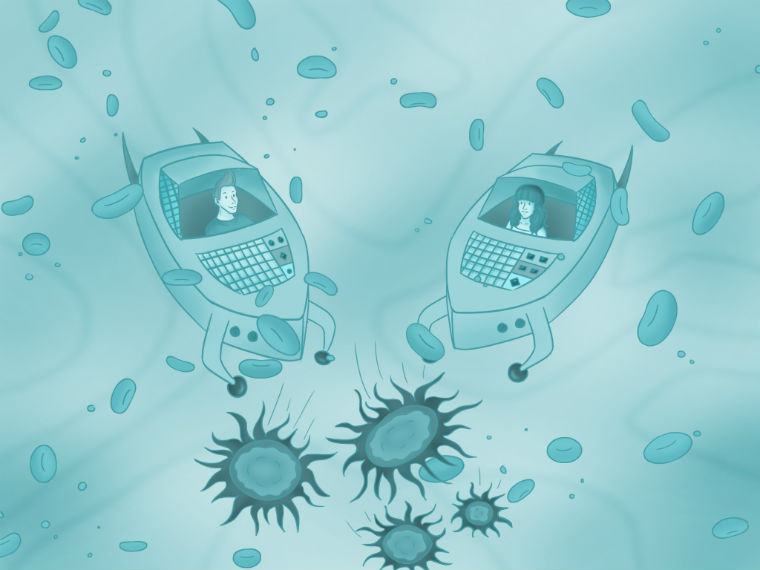Drug delivery

Max was fully occupied playing a video game, while Lily was bored waiting for their gate to open at Heathrow airport. Max turned his body left and right holding his thin screen tightly; it seemed like he was trying to avoid something.
“What are you doing there?” Lily asked half-curious, half-sleepy. Max didn’t look at her in order to keep focused on his game, but answered quickly: “Believe it or not, I am doing my homework”. Lily was so surprised that she went over to him.
“Seriously? We are on a trip around Europe, we have five days left before going home and you are doing your homework?”
“Yes, I am” Max replied, almost jumping to his feet trying to pass some invisible obstacle. He seemed to be glued to his tablet.
“What kind of homework is that interesting?” Lily asked him and poked his arm. Maxed stopped moving with a pained expression on his face. The screen reflected a huge GAME OVER in glowing letters.
“Oops!” Lily mumbled. “Sorry”. Max lay back in his seat disappointed. “This was my physiology homework! We had to land the nanorobot on a virus in the blood stream” he said in a sad voice.
Lily gave him a puzzled look, so Max started explaining. At the nano scale, meaning a scale a billion times smaller than a metre, nanotechnology has created the possibility of successfully detecting diseases at their early stages and delivering drugs to specific cells using nanoparticles. Thanks to nanotechnology, surgeries and the side effects of pharmaceutical treatments can be minimised.
Three components need to be combined in order to have a clever drug targeting system. Firstly, we have a targeting group, which can be a protein, an antibody, or a charged molecule that will recognise and bind with the target tissue where the problem is located. Secondly, we need a carrier to which the drug is attached, or in other words, we need something which will carry the drug. This can be a liposome or a nanoparticle or a macromolecule such as a protein, DNA, or a carbohydrate. Finally, we need the drug that cures the tissue.
In order to avoid the carrier’s destruction by the body’s immune system, we put a coating on its surface, a biocompatible polymer. This polymer works like an invisibility cloak, making the drug invisible to the immune system. Apart from hiding it, it can also make it less toxic. A popular polymer that does this work is the PolyEthuleneGlycol, also known as PEG.
The next development of such drug delivery system is a nanorobot. These are microscopic devices, either synthetic or even biological, that, sense and process information, and act at the nanoscale. These devices can be used both for diagnostic and therapeutic purposes. They use their sensors to detect a problem and then travel through the blood stream to release the necessary drug dose at the right spot. Nanorobots may reach areas in the human body that are difficult or impossible to reach otherwise. Their small size means that they can easily be inserted into the body, requiring minimal invasive surgery, they can detect diseases at very early stages, and they can fight infections from within the body. It is like a powerful new soldier has been added to the army of our own immune system; an ally for the white cells and our other natural defence mechanisms.
“Drug delivery systems have been developed for treating diabetes, cancer, AIDS, Alzheimer’s disease and many other diseases”, Max concluded, showing off on his tablet a sophisticated simulation of the blood stream with a nanorobot navigating through it.
But Lily was quicker than him. She grabbed the device and pressed the START icon. “No worries, Max” she said. “I will do your homework for you” and she started playing, trying to find her target, navigating through the artery and trying hard not to crash into the red blood cells.
